-
THE REFUGEE
-
THE PRESIDENT
-
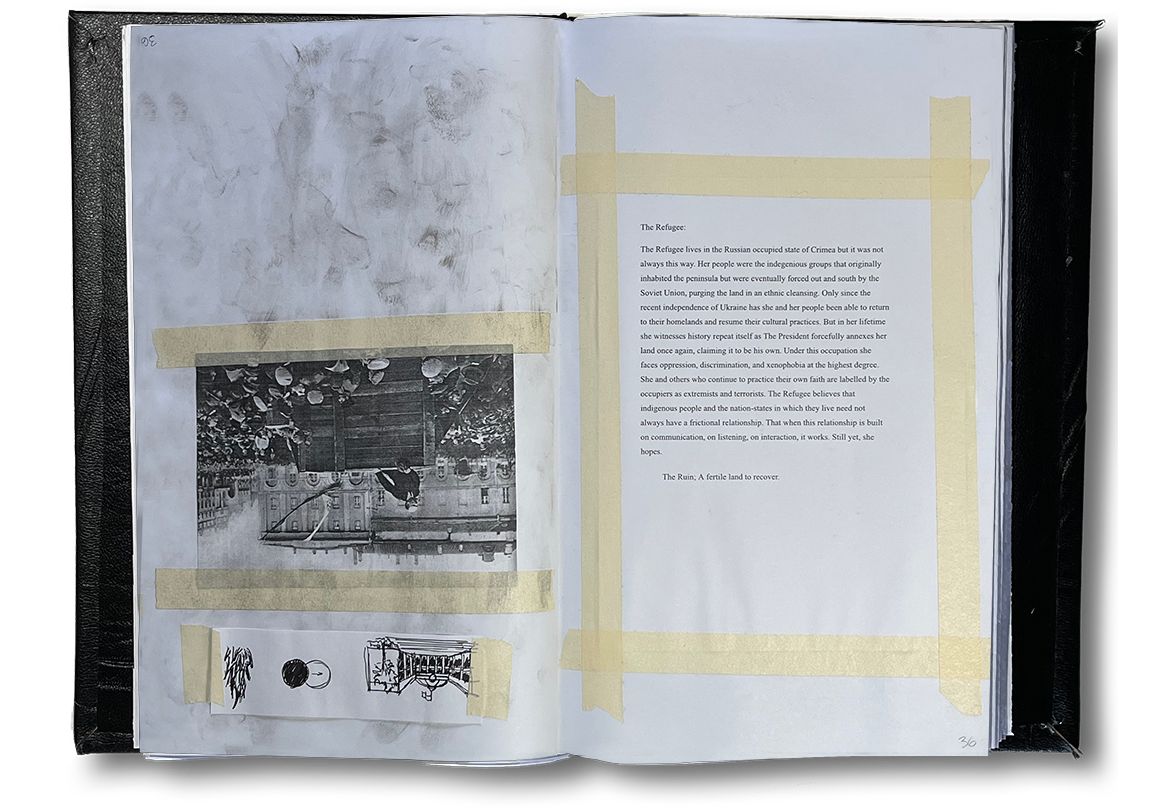
-

-
#36 titled The Pyre shows a ceremonious space created through layering of wood meant to be burned. The drawing references the ruins of Crimean temples and places of worship during the 2014 Russian occupation of the Crimean Peninsula. This invasion by Russia heightened the tension between itself and Ukraine eventually leading to the eruption of war in 2022. Additionally, the drawing also references the wooden podium erected for Vladimir Lenin’s Red Square speech in which the former leader of the USSR boasted the power of communism over all and the celebration of the liberation of proletariats.
-
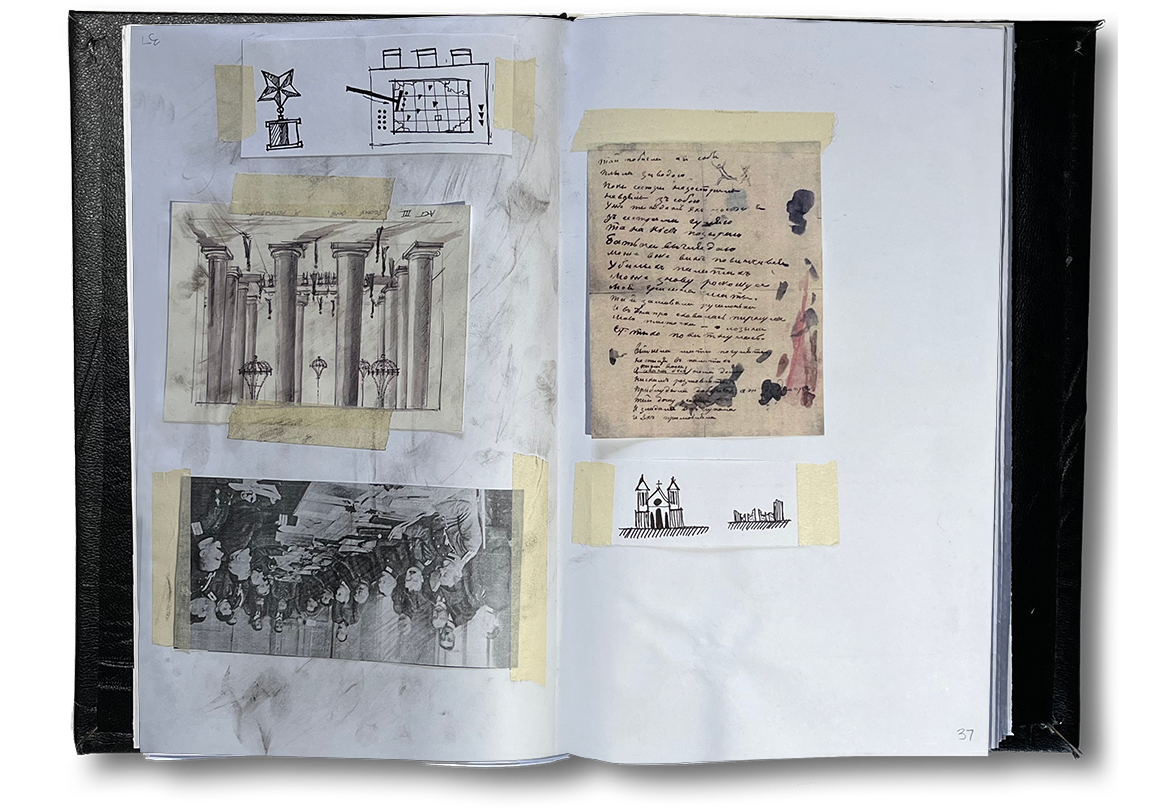
-
#37 titled The Altar shows seating around a semicircular table with stairs leading down to a dark platform below. This drawing references the disparity between the extravagance of The Kremlin halls and the decaying state of Ukrainian temples. The contrast illustrates the continued authoritarian rule into the present day and confirms a significance given to the few over the many. Also referenced is the Brest-Litovsk Treaty, where Russia ceded land to Germany and released Ukraine. But eventually later it was annulled with Germany’s surrender in WWI, allowing the Russian Civil War to continue, exhibiting the power of few deciding the outcome for the many.
-

-
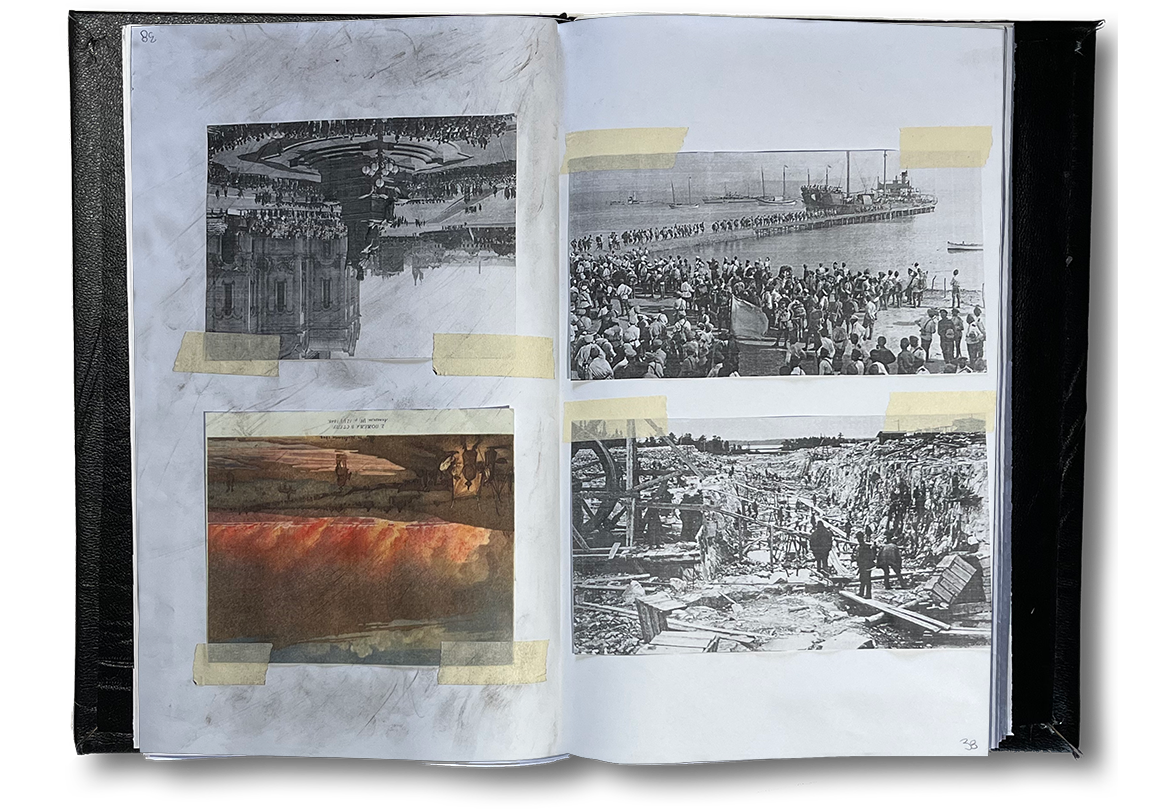
-

-
#38 titled The Court shows an impending spherical stone held above a bowl-like space upon wooden stilts. The sphere held above has the possibility of toppling and crushing those below or can be carefully dismantled. This drawing references the tensions of war, specifically between the rulers and presidents who lead the nations and the citizens who follow them.This is seen with the numerous protests of Russians against President Vladimir Putin for his choice to invade Ukraine. Additionally, in earlier Russian history, Tsar Alexander III was assassinated in 1881 in an attempt to overthrow Russia’s tsarist autocracy and also eventually led to his public statue being beheaded.
-
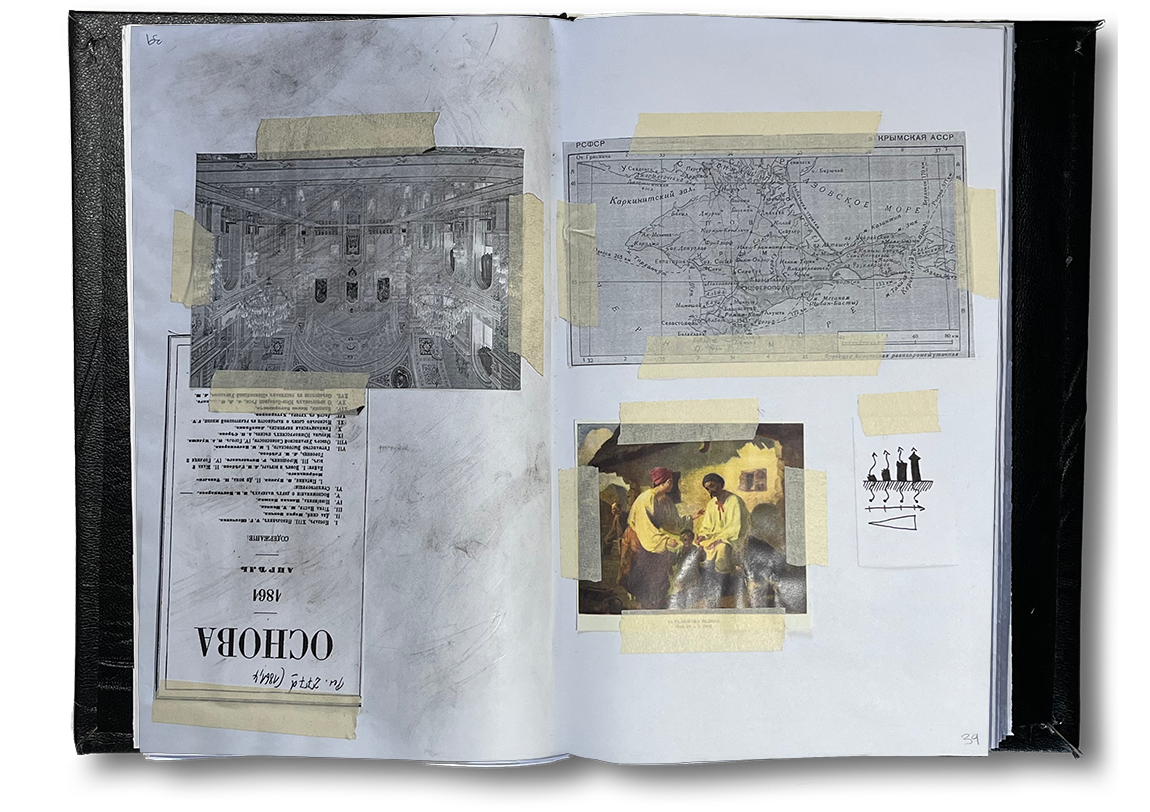
-
#39 titled The Bunker shows a fortified structure above that protects numerous categorized valuables below. This drawing references the conversion of the extensive Ukrainian underground subway stations into bunkers as a form of protection from the devastation of constant bombings in major cities. Additionally, this drawing references the period in history, particularly around 1861, where Ukrainian language was greatly persecuted by the Russian Empire, so journals, like the Osnova, were secretly published about traditions, customs, and life in an effort to maintain a sense of unity.
-

-
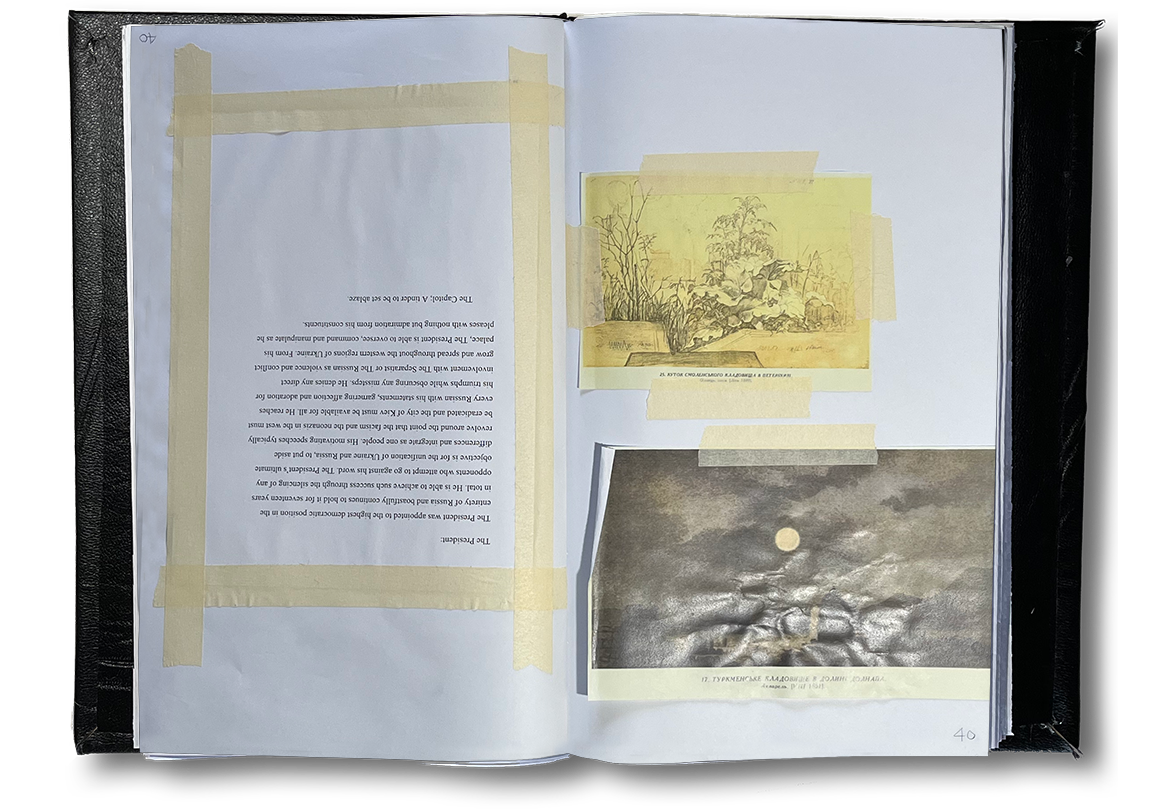
-

-
#40 titled The Mausoleum shows an entrance to a religious chamber holding the remains of multiple family members from generations past. This drawing references the destruction and dismantling of Crimean traditions begun with the occupation by Russia in 2014. But through this burial and repression of culture and the recent outbreak of war, there is a new opportunity for rebirth and restoration. Additionally, this drawing parallels the haunting yet beautiful scenes set forth in Ukrainian artist and poet Taras Shevchenko’s paintings of cemeteries.
-
Back